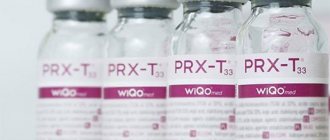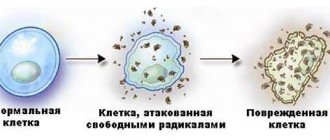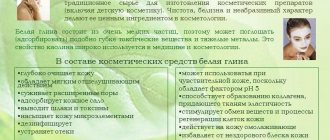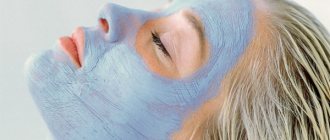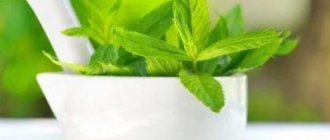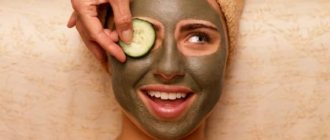Description of trichloroacetic acid
Wartner gel based on trichloroacetic acid
Trichloroacetic acid is hygroscopic, colorless crystals with a specific vinegar aroma. It is an analogue of acetic acid. In this case, 3 hydrogen atoms in the composition of trichloroacetic acid are replaced by chlorine atoms. The substance is highly soluble in water and is considered quite toxic.
This acid is easily absorbed through the skin and cauterizes the epidermis. This property is provided by the presence of chlorine atoms, which are involved in the process of releasing the proton, which has powerful acidic characteristics. Chlorine also promotes deep penetration of the substance through the fatty and protein barriers of the epidermis.
Depending on the amount of trichloroacetic acid in the water, the concentration of the solution may fluctuate. As a rule, less concentrated mixtures are used for cosmetic purposes - about 15-35%. For medical purposes, including the removal of warts, more concentrated solutions are used - from 80% and higher.
Trichloroacetic acid can be used to remove warts either in its pure form or in the form of pharmaceutical preparations based on it. A more preferable way to remove formations is with the use of pharmacological agents. They have an optimal concentration of the active ingredient and are safer to use at home.
Among the most popular drugs is Wartner gel based on trichloroacetic acid
. It does not spread over the skin due to its thick consistency, which prevents the risk of chemical burns. The product has a convenient release form in the form of a pen applicator.
The price of Wartner gel with trichloroacetic acid is 500-700 rubles in Russia (250 hryvnia in Ukraine).
In addition, you can purchase this acid in various concentrations at the pharmacy and use it spot-on to remove warts.
The price of trichloroacetic acid is 1500-2000 rubles in Russia (300-450 hryvnia in Ukraine) per kilogram.
You can purchase this substance in pharmacies, professional cosmetics stores, as well as from suppliers of chemical reagents.
Note! Analogues of trichloroacetic acid for warts are various concentrated acids, for example, acetic, salicylic, retinoic. All these substances are chemically active and burn the skin, and with it the wart.
Ecological role [edit | edit code ]
It is formed in the atmosphere as a result of a reaction involving certain organochlorine compounds, solvents that are used in industry for cleaning and degreasing materials. Increased concentrations of TCA [2] [3] in ground air are dangerous for both plants and animals. This is especially noticeable in regions with unfavorable climatic conditions: steppes, semi-deserts, northern and high mountain areas.
Most women are familiar with peeling procedures in beauty salons. They have a positive effect on the condition of facial skin. Peels are different, they are carried out using various means. Their choice depends on the condition of the skin and the age of the patient. Such procedures have a positive effect on facial skin, renewing and rejuvenating it, eliminating various problems such as acne or age spots.
Trichloroacetic acid is widely used in cosmetology. It helps to carry out facial peeling procedures without severe toxic effects. What is trichloroacetic acid, its properties and purpose in cosmetic procedures?
Beneficial properties of trichloroacetic acid for warts
Trichloroacetic acid is a powerful chemical that should be used with caution. If all safety rules are followed, this substance can have a positive effect on the epidermis and eliminate warts of various types.
Important! Most often, trichloroacetic acid is used to remove common and plantar benign tumors caused by the human papillomavirus.
The beneficial properties of trichloroacetic acid in the treatment of warts are as follows:
- Cleansing . The substance literally removes the top layer of skin along with new growths, making the epidermis smooth and clean.
- Regeneration . Under the influence of trichloroacetic acid, the proliferation of skin cells increases. This leads to an improvement in the barrier and regenerative abilities of the dermis.
- Stimulation . The product helps to dilate the blood vessels of the epidermis. This leads to improved metabolic processes and enhances natural collagen synthesis.
In addition, this acid has an antibacterial effect, destroys pathogenic microflora, and also relieves the inflammatory process caused by the development and growth of warts.
Using trichloroacetic acid to combat warts is quite convenient. First, it is relatively safe when used correctly and has no overall toxic effects on the body. Secondly, you can visually control the depth of penetration of the substance by the nature of the “frost”, which is a consequence of denaturation of the dermal protein, which manifests itself in the form of lightening of the surface of the epidermis. Thirdly, trichloroacetic acid distributes well over the skin and gives quick results with minimal preparation.
In addition, the product has an additional effect on the skin of the feet, removes calluses, corns and rough epidermis along with warts.
Main varieties
There are two main types of vinegar: synthetic or industrial (also called table vinegar) and natural.
Natural is obtained as a result of the natural fermentation of alcohol-containing products when exposed to acetic acid bacteria, and can be very diverse:
- wine;
- balsamic;
- fruit and berry;
- apple;
- alcohol.
The natural product contains, in addition to acetic acid, other fruit acids, esters, vitamins and minerals. However, its acidity, as a rule, does not exceed 6%. This composition makes the spice not only aromatic, but also very healthy.
Synthetic, in turn, is a product artificially created in industrial conditions. It is obtained by diluting the synthesized concentrated acetic acid. The latter is sometimes called ice (at a concentration close to 100%).
Instructions for trichloroacetic acid for warts
It is recommended to treat at home only plantar or vulgar (common) warts, which are localized on the feet and hands.
Regardless of whether you use a pure concentrated substance or a preparation based on it, use trichloroacetic acid according to the instructions:
- Clean the surface of the leather you plan to treat.
- Apply a drop of the substance directly to the neoplasm.
- Try to avoid spreading the product onto healthy epidermis. To avoid getting it on the skin, first cover the area around the wart with a thick layer of any fatty cream or Vaseline.
- Make sure that the entire surface of the tumor is covered with a thin layer of trichloroacetic acid.
- If the wart is large enough, add one or more drops of the substance.
- Wait for the product to dry completely.
- There is no need to remove any remaining substance from the wart; immediately after drying, you can get dressed and begin your daily activities.
It should be understood that warts will not disappear in one procedure. You need to repeat this manipulation for at least 4 days in a row. As a rule, the tumors will disappear within 10 days.
In the first 4 days of using trichloroacetic acid, the warts will gradually peel off along with the epidermis. You can gently facilitate this process by exposing your skin to running warm water from time to time. Do not peel off the crusts!
A few days after the start of treatment, a pinkish area of healthy skin will appear at the site of the wart. Sometimes, as the tumor dies, it darkens. This is normal. The full course of skin restoration can last up to several weeks.
Note! If the tumor is located on a sensitive area of the foot and it causes discomfort when moving, you should protect the skin with a bandage.
Contraindications to the use of trichloroacetic acid
Trichloroacetic acid is a fairly potent chemical. It should be handled with extreme caution so as not to harm the skin. In addition, it has a number of contraindications.
Let's look at them:
- Trichloroacetic acid should not be used on hypersensitive skin, or applied to the face or intimate area.
- Warts should not be treated with trichloroacetic acid if the skin area contains seborrheic keratosis, fibroids, moles, heavy pigmentation, and molluscum contagiosum.
- During pregnancy and lactation, trichloroacetic acid should not be used.
- Diabetes mellitus of both types is also a contraindication to the use of this substance.
- Warts should not be removed from children under 4 years of age.
Important! If there is the slightest doubt that the skin growth is a wart, the use of trichloroacetic acid must be agreed with a dermatologist.
Also, you should not combine this substance with other drugs to remove benign tumors.
If trichloroacetic acid gets on a healthy area of skin, it should be removed immediately with plenty of running water.
Indications for use
Trichloroacetic acid peeling is not suitable for everyone. Feedback from experts indicates the need for mandatory consultation before the procedure. Cosmetologists say that chemical facial cleansing is necessary only if there are severe age-related skin problems.
Indications for TCA peeling are:
- post-acne;
- hyperkeratosis;
- oily skin with enlarged pores and acne;
- scars on the skin of the face;
- strong pigmentation;
- wrinkles as a result of photoaging;
- loss of elasticity;
- pitting on the skin after chickenpox;
- expression lines in the eye area;
- stretch marks.
Results of using trichloroacetic acid
In most cases, it is enough to apply the substance 4 times for the wart to begin to die and eventually disappear completely.
Visible results after using trichloroacetic acid usually occur within a week. If the wart is old or there are extensive skin lesions, then the course of treatment may need to be extended.
Trichloroacetic acid has a detrimental effect on the affected tissue, thus cleansing the epidermis of neoplasms. In addition, the substance eliminates the human papillomavirus, which prevents the spread of infection throughout the body and prevents warts from reoccurring.
Types of peeling
Many experts call peeling the secret of youth. The type of procedure is selected depending on the needs of the epidermis and age. Superficial peeling is suitable for all skin types. It allows you to eliminate dead skin cells and cleanse pores.
Medium peeling provides deeper cleansing. It is recommended to do it in the presence of age-related and pronounced facial wrinkles. After just one session, there will be a noticeable improvement in skin condition. The procedure is in great demand in beauty salons. Trichloroacetic acid is usually used as the active ingredient. The properties and mechanism of action of this substance will be described in detail below.
Deep peeling is a medical procedure and can only be performed by an experienced specialist. After such a procedure, the epidermis needs long-term recovery, proper nutrition and hydration. The cost of the procedure differs significantly from previous ones.

